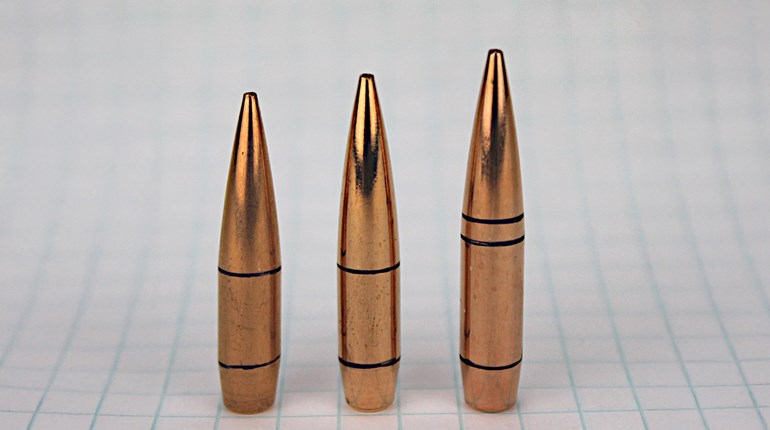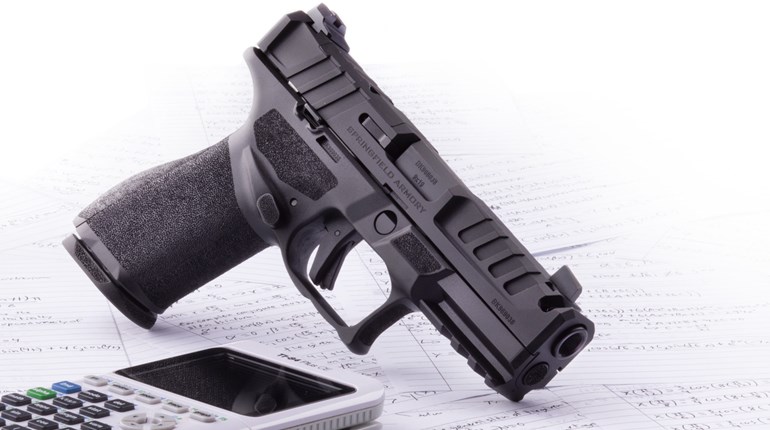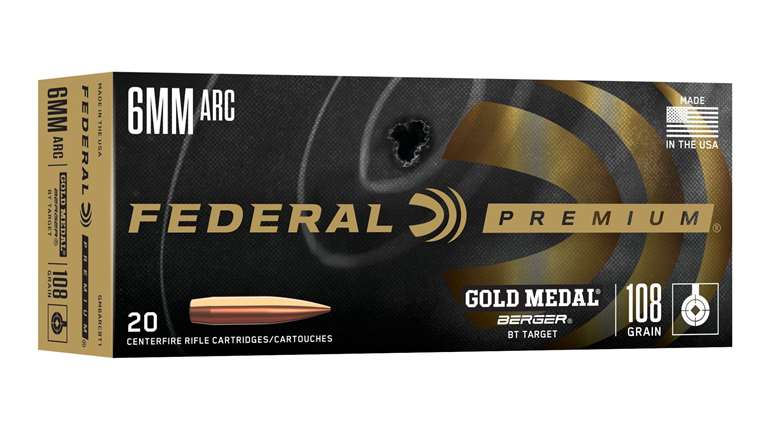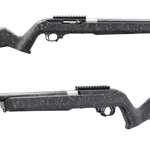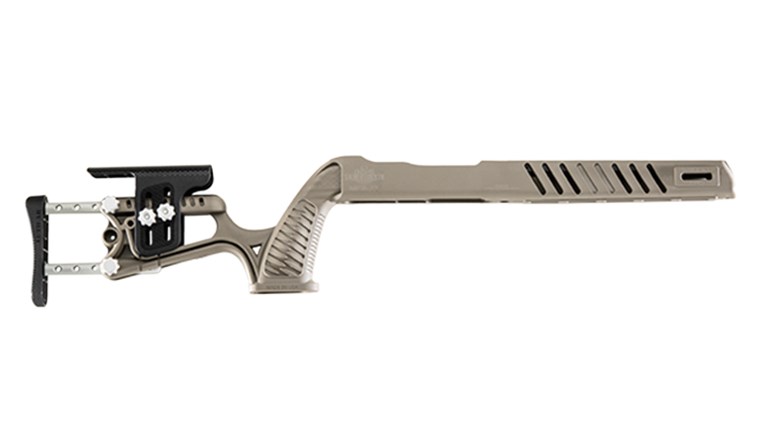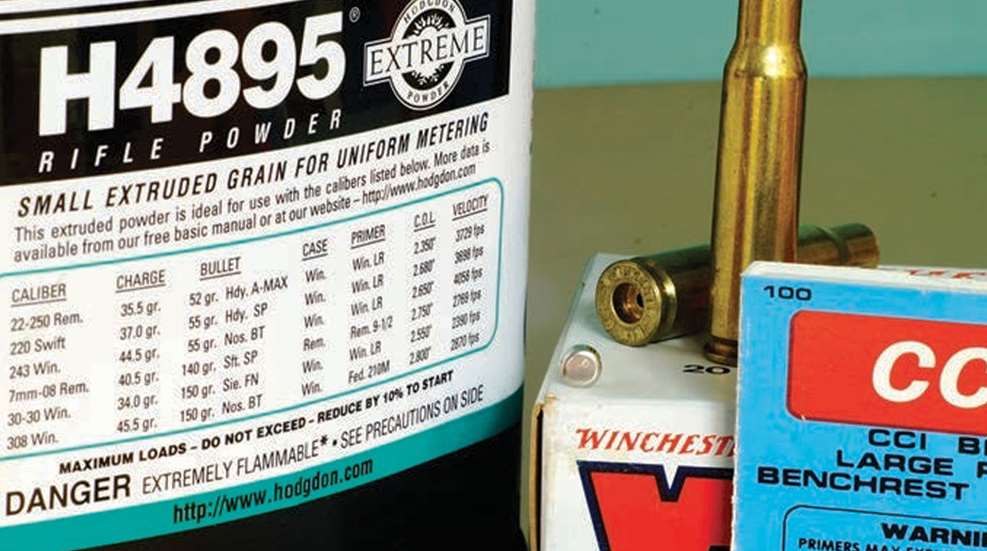
WARNING: All technical data in this publication, especially for handloading, reflect the limited experience of individuals using specific tools, products, equipment and components under specific conditions and circumstances not necessarily reported in the article and over which the National Rifle Association (NRA) has no control. The data has not otherwise been tested or verified by the NRA. The NRA, its agents, officers and employees accept no responsibility for the results obtained by persons using such data and disclaim all liability for any consequential injuries or damages.
Above: You can’t expect to test rifle accuracy on short, indoor ranges, but there is a good opportunity to do ammunition testing to evaluate both consistency and velocity. Always check for excessive pressures!
A question came up about wintertime, indoor testing, which orbited around the viability of load development for NRA High Power Rifle at a 50-yard distance. If you are fortunate to live with such a facility at hand, it’s a shame to let it go to waste when winter’s afoot, and a foot of snow is on the ground.
Assuming the range backstop is engineered for fully safe stoppage of a high-velocity jacketed bullet, what could anyone learn from this venture? In my estimation, there’s not much value in documenting group sizes. Just about any load will perforate well at that distance, and it would be difficult to determine better or worse accuracy with certainty. Put another way, if it’s a bad group at 50 yards, it’s only going to get worse with distance. All loads get worse with distance ...
Another quibble is that bullets constructed with increased ballistic-coefficient profiles (which means the bullets are longer) may produce misleading results at short distances. It takes some real estate for long bullets to stabilize as well as they will on their journey to the across-the-course target. I likewise don’t think it’s wise to do load work-ups at 100 yards using “600-yard” bullets. Again, you may certainly weed out poor accuracy at 100 yards, but you won’t necessarily find an accurate load to fire at the intended distance. After some thought, I decided that indoor, wintertime testing might be well exploited by gathering velocity data, so here are a few thoughts on that. Standard Deviation
Standard Deviation
There is always a question about whether velocity deviations really matter to accuracy, and let’s extend that to a simpler standard, and say “score.” The most common evaluation of velocity consistency is in standard deviation, or SD. SD reflects the consistency of velocity readings taken over a number of shots. “Standard” reflects on a sort of average of the rounds tested. Now, math people don’t use phrases like “sort of” when describing numbers, so here it is: SD is the square root of the mean of the squares of the deviations.
To calculate SD, add all the velocities recorded together and divide them by however many examples there were to get a mean. Subtract that mean number from each single velocity recorded to get a deviation from the mean. Square each of those (that eliminates the negative numbers that ultimately would cancel out and return a “0”). Add the squares together and find the mean of the squares by dividing again by the number of numbers you are left with. Then find the square root of that, and that’s the standard deviation.
To offer a few examples from my notebooks, the SD on a load I like in .223 Rem. is 3.18 with a range of 8 fps. (The range in a set of velocity readings is simply the mathematical distance between the lowest velocity and the highest.) On another load I had recorded, the SD was 22. One of those shots was 67 fps lower than the highest, and 36 lower than the next lowest. Throwing out the nuisance shot of 67 fps, the SD recalculated to a right respectable figure, but there was still a -15 and -31 fps oddball in the bunch.
So what does this mean? Note the shots as they come up on the display and write them down or, if you have a zoot-capri model chronograph, let its printer provide a record of them. I believe, but honestly don’t know, that it’s mathematically not possible for an SD to be higher than the greatest single raw deviant, but I do, for a fact, know that an SD can easily be far lower than the worst shot. Given how it’s calculated, it’s plain that the nearer the majority of the rounds’ velocities are to themselves, the less influence one or two bad ones have on the SD. Back to the 67 fps hiccup. That round, if fired on target, may have been an elevated shot, and what if it was the first round fired? Confusion is always better later in a string than earlier, in target shooting at least. The whole point, so they say, to a low SD is more reliability downrange (less worry and fewer questions, in effect), so look at the contribution of each shot in the calculation, rather than an average.
Consistency
Those who have read much about handloading or ammunition testing have no doubt read something similar to this: “The best groups aren’t always from the ammo that shows the lowest standard deviation.” True. A few things: One is that there was an article in Shooting Sports USA that offered advice on testing loads, and part of the advice was to follow an “incremental” load work-up procedure.
The idea, when it works as hoped, is to discover a combination that shoots good groups at close to the same elevation, with different propellant charges. If we get that, then we have a load that’s “forgiving:” Forgiving of small variations in temperatures, propellant charges—ostensibly all influential factors, and as such, a combination that is demonstrating a fairly large SD.
I think that a low SD is a reflection of the quality of loaded ammo. Without a doubt, the main influence in improving (reducing) SD is propellant charge weight/volume consistency. That doesn’t mean perfectly weighed charges will always produce low SDs with all propellants. It does mean that the case fill consistency will impact SD (low or high). There are other influential factors beyond propellant charge, certainly, that influence consistency, but it’s probably the leader.
Steady Wins the Race
Whilst peddling my pickup through an Arkansas downpour towing a gigantic trailer, I heard G. Gordon Liddy say on his radio program that “Speed doesn’t kill; speed differential kills.” He was, of course, referring to highway traffic, but many shooters believe the same when it comes to downrange ballistics.
As said, “standard deviation” is the most common measure for velocity consistencies, but I don’t think it is nearly as important as the range, which is the lowest and highest speed recorded. Some who write and talk about it call that “extreme spread,” but if we want to get picky over terms (and ballisticians, card-carrying and self-styled, tend to get right touchy over such formalities so I’ll be as careful as I can) “extreme spread” is the difference between this shot and the next shot.
I watch the speed on every shot and do not worry about calculating a number to brag about or fret over. I honestly don’t think it’s ever been shown that an extremely low standard deviation is the divine bestower of accuracy. Any benchrest shooter will tell of experiences whereby screamer groups came with high SDs, and hideous groups with low SDs. But, at 100 or 200 yards, the bullet’s time of flight and speed loss are both so relatively small, that a variation in bullet velocity isn’t going to materially harm a group, even for the micro-tiny groups it takes to be competitive in benchrest shooting. Further downrange, though, there is going to be a relatively greater effect on accuracy, right? Yes and no. Drift and drop are influenced at greater distances, and the question is whether or not it makes any difference to the score. There is a relatively greater effect of velocity variance in the ultimate displacement of elevation (more on this later). Based on drift allowance, it probably is not affected as much by velocity.
Drift
To pitch an example at it, let’s say we’re shooting a Sierra 190-grain .308 Win. that someone dusted off and took to the 600-yard line. Its 2600 fps at the muzzle becomes 2450 at 100 yards, and 1750 at 600 yards. (All these numbers are rounded examples, and examples only.) If this old feller was working with a truly hideous inconsistency of 100 fps, let’s say that means one bullet goes out at 2550 and the next leaves at 2650. In a worst-case event, the first bullet tracks across about 28 inches (oh, yeah, we’ve got a dead constant full-value 10 mph wind so I didn’t have to get jinky with a calculator), and the next shot tracks sideways only 26 inches. Figuring the drift at 2600 fps means he’s two inches off—one inch per shot.
Now, if he can hold that well, he’ll see a difference. But if he was either holding a little off or miscalculated the wind and landed one of those shots a half-inch outside the 10-ring, then having a lower SD could certainly have gotten him a point. Taking this in the other direction, however, realize there may be just as great a likelihood that the extra (or less) drift might have just as easily made up for his errors. (As best I can, I’m going to try to refrain from “luck” being a factor.)
Drop
Now, drift is but one downrange effect affected by speeds. Drop, which means elevation, is a (the) factor, and here’s where poor SDs bite. With this Sierra 190-grain, drop amounts over a 100 fps range are about three times as great as drift amounts. A vertically centered bullet at 2600 fps hits about five to six inches higher or lower at each 50 fps muzzle velocity difference. That’s enough to blow up a score, via points lost to elevation.
The net effect of a terrible SD, which, let’s not forget, means that some shots are coming out much faster or slower than the next or last did, is point loss—straight up. And, since we do not want to lose points, we’re also trying to chase after each shot, catching up to the target center on the next round (regardless of wind shooting strategy employed). It doesn’t take a rocket scientist to understand the potential for compounding the problem by chasing the spotter up and down with this load. The best thing anyone could do is to shoot straight away and hope to “split the difference” on the rear sight setting. But if this shooter didn’t chronograph his load, he’d have no idea what was going on (or, at least it may not be the first cause he came up with) and would most likely be blaming the gun, sight, self, or the stars for his problems.
So, the next up from the bottom line, is that poor SDs don’t hurt in the wind as much as they do on the elevation. The bottom line, then, is back to the start: Don’t shoot a load with inconsistent speeds. It’s not (ever) necessary. That’s what all this testing is about.
Here we are in “math land” and, when in math land, as in Rome ...
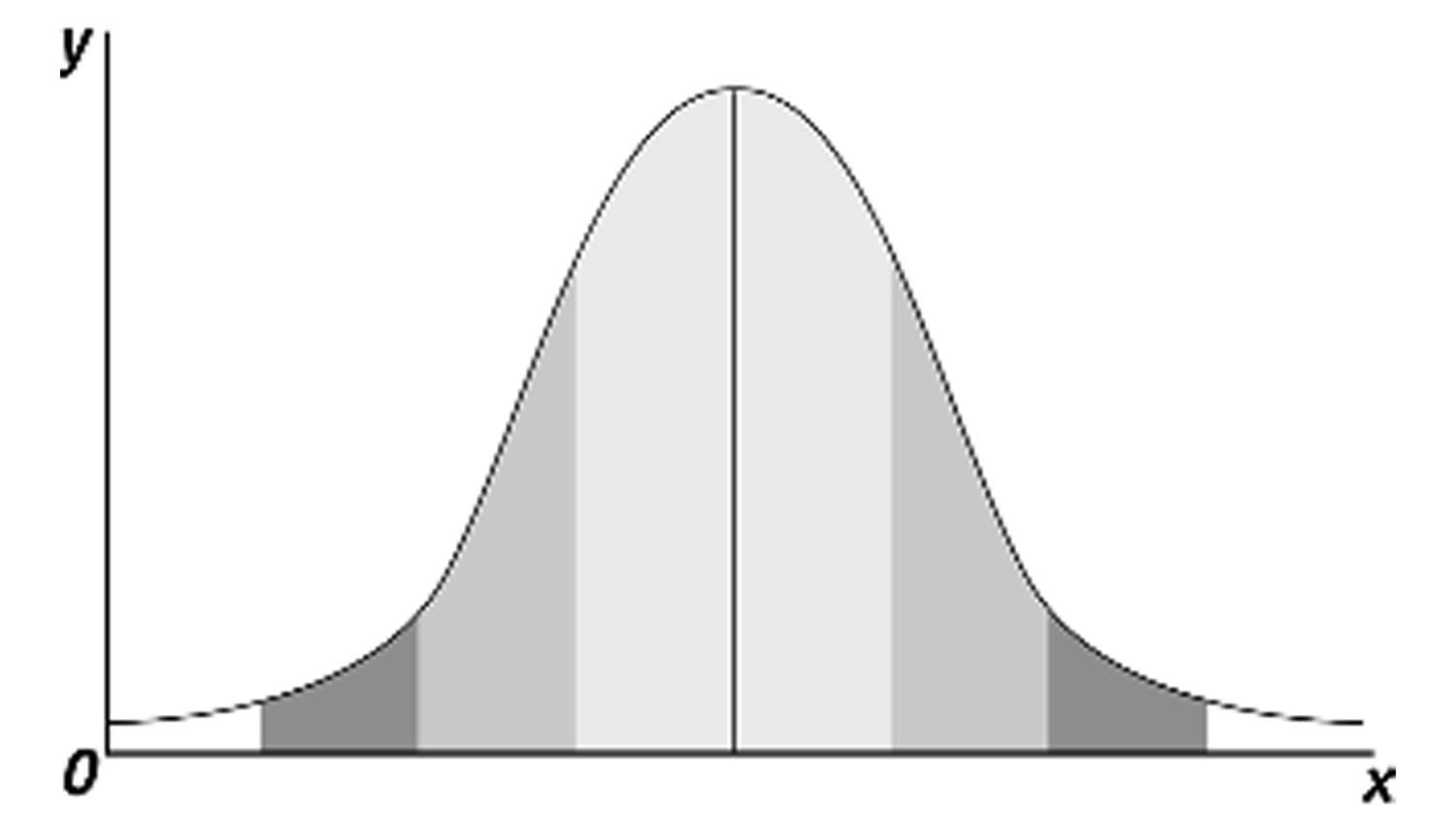
A plotted standard deviation calculation is a bell curve. Chances are outstanding that a typical range session calculation will plot into what they call a “normal curve” and, like any normal bell curve, the thing can get divided into threes—the “standard deviations.” Values are such that about 68 percent lie within one standard deviation of the mean (center line in the illustration); about 95 percent lie within two; and over 99 percent lie within three standard deviations of the mean value. If we have an SD calculated to be 12, that means that about 68 percent of all “next shots” will be +/- 12 fps. Because the curve is in threes, that means that a scant number of the shots pose a chance for +/- 24 fps, and that some teeny chance remains for shots to go to +/- 36 fps. However, it isn’t wise to make such extrapolations or predictions with data in our sport. We’re not computing odds or polling for school funding or some such. Data collection is a record of numbers and I do know that there’s a 100 percent chance that the highest and lowest velocities collected for an SD calculation did, in fact, happen. That matters most, I say.
About the Author
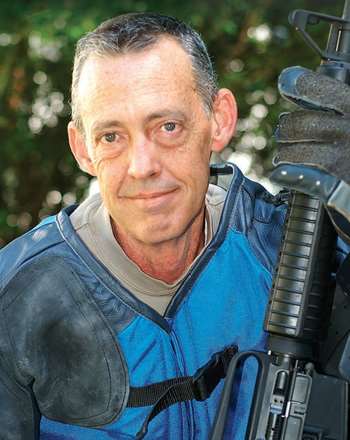
Information in this article was adapted from Handloading for Competition: Making the Target Bigger, published by Zediker Publishing. Glen Zediker has worked professionally with some of the greatest shooters on the planet, as well as leading industry “insider” rifle builders, manufacturers, and proven authorities on gunsmithing, barrel making, parts design and manufacture, and handloading. And he does pretty well on his own. Glen is an NRA High Master and earned that classification in NRA High Power Rifle using an AR-15 Service Rifle and the information he puts into his numerous articles. For more information, including many downloads, see www.zedikerpublishing.com or call 662-473-6107.













